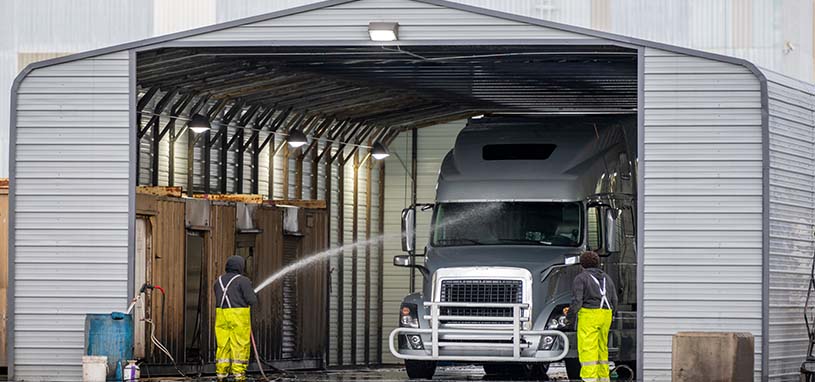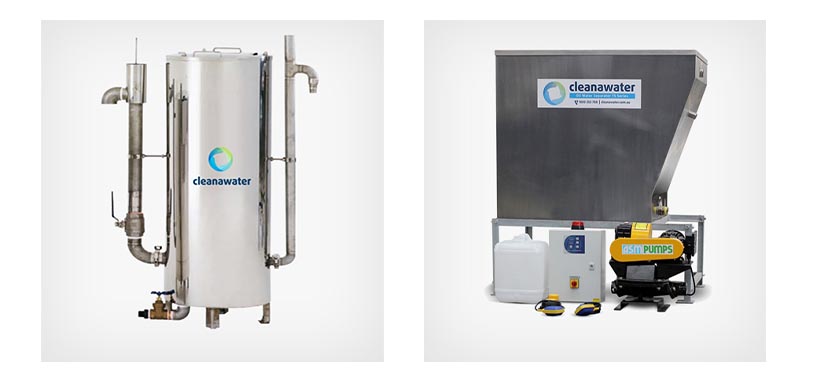Using quick break degreasers with oil water separators
Many water authorities require oil water separators as a pre-treatment for wastewater before it is discharged into the sewer system. This is aimed at protecting downstream water processing plants from excessive oil and grease, and preventing hydrocarbon spills into the environment.
However, oil water separators only work when the wastewater is free from emulsions. This is where quick break degreasers are effective.
Contact Cleanawater for more information about quick break degreasers and oil water separators.
How oil gets into the wastewater
Any industrial or commercial application that involves washing equipment or cleaning engines leads to hydrocarbon residue in wastewater.
- Oil gets embedded in dirt that sticks onto a vehicle.
- When this dirt is washed away, oil is washed away, too.
- This oil gets carried away in the waste water.
Many car washes and engine cleaning processes use degreasers to dissolve oil residues into an emulsion. Without these chemical products, the oil is very hard to remove.
However, the downside is that once the oil is in emulsion, it cannot be removed from the water by an oil water separator. This emulsion could be carried right through into the sewer system and eventually into the environment.
Industries affected by degreasers

Most water authorities set licence conditions that stipulate a maximum hydrocarbon content in wastewater. This is why the following industries need oil water separators to remain compliant.
-
Car washes, vehicle wash-downs and the mining industry all use high pressure cleaning and degreasers to clean vehicles and equipment.
-
Workshops, service stations and transport companies may also generate wastewater containing traces of hydrocarbons.
Failure to comply with licence conditions for wastewater could lead to serious consequences. The Environmental Protection Agency has the power to impose fines or even shut down operations until the problem is resolved.
In order to avoid these consequences, it is important to understand:
-
How degreasers work
-
The difference between quick-break degreasers and standard degreasers
-
The impact of degreasers on the performance of oil water separators
How quick-break degreasers work
Degreasers dissolve hydrocarbons in water in the form of an emulsion. They break oil down into tiny droplets that mix in between the water droplets.
-
An emulsion keeps oil droplets so small that they do not separate out from the water.
-
The result is a dirty, foamy-looking wastewater.
-
It is impossible to tell how much oil is trapped in the emulsion.
Quick-break degreasers perform this function, but then quickly release the oil droplets from the emulsion.
-
Once the emulsion is broken, oil droplets begin to stick together to form larger droplets.
-
The larger the oil droplets, the easier they are to separate from the water.
There is a trade-off between the concentration of quick-break degreaser and the quick-break action that releases the oil. Using a higher concentration of degreaser will increase the time before the emulsion is broken.
Therefore, quick-break degreasers must be used correctly to prevent oil from being released into the environment.
Suppliers of quick-break degreasers specify the expected performance of their product on an Material Safety Data Sheet (MSDS). Even with this theoretical information, it is advisable for users to test the performance of the degreaser in their facility.
This can be done through trials with different concentrations. This ensures that the emulsion is broken before the wastewater stream enters an oil water separator.
How oil water separators work

There are different types of oil water separators. The most common types used in the industries outlined in this article are vertical gravity and coalescing plate separators. Both use the principle of gravity, allowing oil to rise to the surface of the separator while water discharges from the bottom.
-
Both methods use plates or media packs to accelerate the separation process.
-
Oil droplets stick to the media and then consolidate into bigger droplets as they rise along the surface.
-
If the separator is functioning efficiently, clean water discharges from the bottom or discharge side of the separator.
-
Oil collects in a vessel for disposal from the top of the separator.
When the wastewater entering a separator is still in an emulsion form, the tiny oil droplets do not stick to the plates or media. The emulsion passes straight through the separator and out into the wastewater discharge.
This is very harmful for the environment, as oils causes damage to plant and animal life. Oil water separators cannot work unless the emulsion is broken before wastewater enters the separator.
Contact Cleanawater
Cleanawater supplies and installs oil water separators for a variety of industries in Australia. We advise our clients on which quick-break degreaser is best suited for their application and help run trials to evaluate their performance.
Contact Cleanawater or call our expert team on 1800 353 788 today to arrange a consultation for your oil water separator needs. We will keep you compliant with regulations and help you minimise your impact on the environment.
Must Read
VapourGard: Your ultimate odour control solution
Control odours effectively and safely with CleanaWater's VapourGard system. Ideal for industries such as mining, landfill operations, recycling, and more, the VapourGard system uses lightweight partic ...
Read moreControl Odour with VapourGard
Control odours effectively and safely with CleanaWater's VapourGard system. Ideal for industries such as mining, landfill operations, recycling, and more, the VapourGard system uses lightweight partic ...
Read more